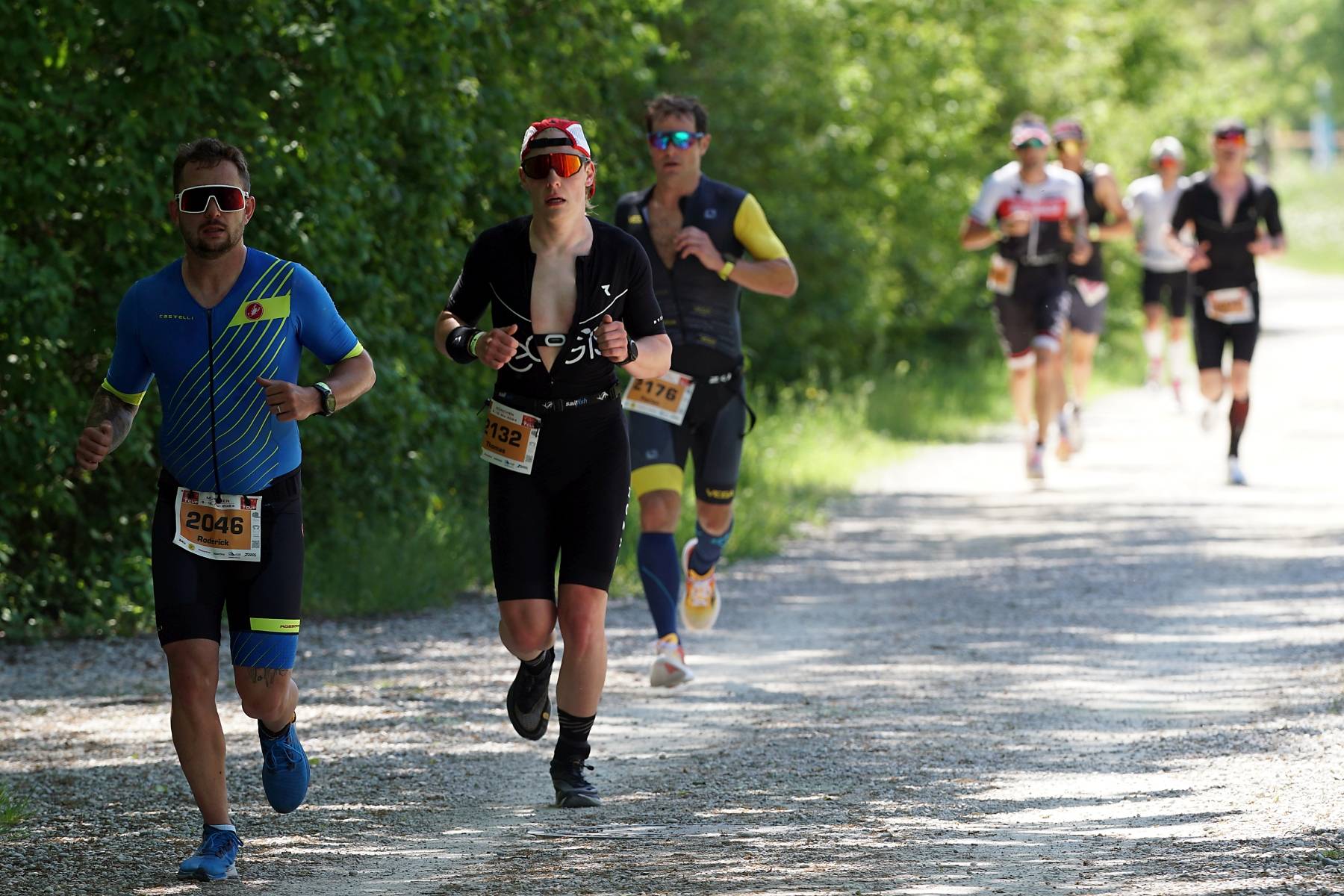Es ist nichts Neues, dass wir Sauerstoff zum Leben benötigen und um sportliche Leistung zu erbringen. Durch das Ein- und Ausatmen wird die Lunge eingezogen bzw. rausgedrückt. Innerhalb der Lunge wird der Sauerstoff über die roten Blutkörperchen an die Stellen befördert, wo er benötigt wird – in „unsere Muskulatur“. Einfach und doch kompliziert, denn jeder kennt das Gefühl, einfach nicht genügend Luft zu bekommen und komplett zu übersäuern. Wie man Seitenstechen verhindert und was der Unterschied zwischen Brust- und Bauchatmung ist, erfahrt ihr hier.
Bei vermehrtem Energieverbrauch benötigt unser Körper zusätzlichen Sauerstoff. Hier gilt es zu erwähnen, dass unsere Lunge auch bei Höchstbelastung nie an die Grenze ihrer Leistungsfähigkeit kommt, obwohl man bei maximalem Tempo oft das Gefühl hat, das nicht mehr genug Sauerstoff im Muskel ankommt.
Hierfür ist der Energiestoffwechsel verantwortlich. Da der Körper im anaeroben Energiestoffwechsel laufen muss, beeinflussen andere Parameter wie zum Beispiel die Herzgrösse und die Kapillarisierung den Sauerstofftransport in die Muskulatur.
Atemreflex sei Dank
Viele Sportler versuchen sich beim Schwimmen (2er Zug, 3er Zug,) oder beim Laufen (3 Schritte einatmen und 4 Schritte ausatmen) an einem selbst auferlegten Atemrhythmus zu orientieren. Aber unser Körper besitzt auch einen Atemreflex, welcher eine zu hohe Kohlendioxidkonzentration im Blut, versucht zu regulieren.
Im Tauchsport kann das sogenannte Hyperventilieren gefährliche Folgen haben. Das Kohlendioxid wird normaler Weise größtenteils ausgeatmet. Beim Tauchvorgang entsteht jedoch trotz Sauerstoffmangel kein ausreichender Atemreflex, da der Kohlendioxid Schwellenwert, der den Atemreflex startet, nicht erreicht wird. Dies kann zu einer Ohnmacht unter Wasser führen.
Deswegen: Achtet beim Laufen und Schwimmen auf keinen bestimmten Rhythmus. Gleichmäßigtes und ruhiges Atmen unterstützt den richtigen Rhythmus von selbst.
Beim Schwimmen wird durch den jeweiligen Schwimmstil der Atmungszeitpunkt vorgegeben. Je nach Können und Tempo kann jeder entscheiden, wann und wie oft er atmen möchte. Je nach Belastungsgrad benötigen wir mal mehr und mal weniger Sauerstoff. Beim Schwimmen muss die Atemmuskulatur im Gegensatz zu den anderen Disziplinen generell weniger Arbeit verrichten. Grund hierfür ist die Wasserlage.
Seitenstechen ade!
Gerade beim Laufen kennt jeder das Problem mit lästigem Seitenstechen. Ein stechender Schmerz zwingt den Sportler zu ungewünschten Gehpausen. Eine Verspannung des Atemhilfsmuskels, dem Zwerchfell, ist dafür mitverantwortlich. Ein falscher Atemrhythmus, zu schwache Rumpfmuskulatur oder zu geringer zeitlicher Abstand zwischen Essen und Training lösen dieses Ärgernis aus.
Was kann ich gegen Seitenstechen machen?
- Bewusstes tiefes Ein- und betontes Ausatmen
- Die Hand auf die schmerzende Stelle drücken und bewusst weiter atmen
- Beim einatmen die Arme über den Kopf an heben und die Bauchmuskulatur leicht strecken
- Ausatmen, wenn das Bein der nichtschmerzenden Seite auftritt.
Brust oder Bauchatmung?
Um Kurzatmigkeit zu verhindern, sollten wir tief genug atmen und unser gesamtes Volumen ausnutzen. Bei der Bauchatmung ist ein heben und senken des Bauches zu sehen. Der Hauptmuskel ist das Zwerchfell. Bei der Brustatmung ist ein heben und senken der Brust zu erkennen. Sie ist die ineffektivere Art der zwei Atmungen und wird hauptsächlich im Ruhezustand durchgeführt.
Kontrastübung zum erfühlen der Brust und Bauchatmung: „Atmen und Laufen“
- Lauft mit lockeren Tempo und Schrittlänge. Achtet auf die Leichtigkeit eurer Schritte und nehmt euren Rhythmus wahr.
- Die nächsten 20 Schritte wird er Atem angehalten. Danach wird ruhig und gleichmäßig weitergelaufen.
- Während der nächsten 20 Schritte streckt euren Bauch heraus, sodass dieser größer wird. Danach wird normal weiter gelaufen. Versucht wahrzunehmen, ob ihr eine Veränderung spürt.
- Während der nächsten 20 Schritte zieht euren Bauch ein, sodass dieser kleiner wird.
Danach wird normal weiter gelaufen. Versucht wahrzunehmen, ob ihr eine Veränderung spürt.
- Nachdem ihr ausgeatmet habt, haltet ihr euren Brustkorb in dieser Position für die nächsten 20 Schritte
- Dann atmet ein und haltet den Brustkorb „in der großen Form“ für die nächsten 20 Schritte
- Jetzt kombinieren wir das Ganze. Jeweils 10 Schritte den Bauch klein und den Brustkorb groß machen. Dann 10 Schritte mit Bauch groß und Brustkorb klein weiterlaufen.
Vor dem Wettkampf …
Entspannungsübung: „Die Nervosität und Angst weg atmen“
Durch gezielt lange und ruhige Atemzüge beruhigt sich der Puls und es tritt Entspannung ein
- Langsam durch die Nase einatmen und dabei innerlich bis 4 zählen
- Den Atem anhalten und dabei innerlich bis 4 zählen
- Langsam ausatmen und dabei innerlich bis 8 zählen
- Den Atem anhalten und dabei innerlich bis 4 zählen
- ….und wieder von vorne anfangen
Und ab geht die Post …




















